The slavery system in ancient Egypt was a complex and multifaceted institution that significantly shaped the social and economic landscape of one of history's most remarkable civilizations. Unlike the chattel slavery seen in modern contexts, ancient Egyptian slavery was often fluid, intertwined with various factors including war, debt, and social status. Understanding the origins, types, and impacts of slavery in this ancient society provides valuable insights into the daily lives of Egyptians and the monumental construction projects that characterize their legacy. This blog post will delve into the various aspects of the slavery system in ancient Egypt, exploring its roots, societal influences, and eventual decline.
Origins of Slavery System in Ancient Egypt
The origins of the slavery system in Ancient Egypt can be traced back to its earliest dynastic periods, during which the socioeconomic structure began to take shape, allowing for the establishment of a hierarchy that included various classes, where individuals were sometimes compelled into servitude due to conquest, debt, or birthright, and as the civilization expanded its territories through military campaigns, the number of captives increased, leading to a growing population of enslaved individuals who were subsequently integrated into the labor force. Notably, the practice of slavery was not uniformly defined, as it encompassed a diverse array of individuals that ranged from those who were prisoners of war to those who became slaves as a result of various legal and social circumstances involving familial obligations, thus highlighting the complex interplay between social status and the institution of slavery within this ancient society.
- Prisoners of War: Often captured during military conquests, these individuals became slaves as a result of Egypt's expansionist policies.
- Debt Servitude: In many cases, individuals or families who had accrued significant debts might sell themselves or their children into slavery as a means to repay the debt.
- Birthright: Some individuals were born into slavery, inheriting their status from enslaved parents, thereby continuing the cycle of servitude across generations.
As Ancient Egypt evolved, the role of slaves transformed from mere captives to integral components of the economy and society, with some sources indicating that slavery was prevalent across various sectors, ranging from domestic servitude to agricultural labor, and even skilled work in crafts, thus illustrating that the slavery system was not solely relegated to the most menial tasks but also encompassed a spectrum of roles that contributed significantly to the prosperity and development of the civilization. Furthermore, these enslaved individuals sometimes had varied experiences based on between societal perceptions, their personal capabilities, and the demands of their owners, which in some cases led to a semblance of autonomy or the opportunity for social mobility, yet the overarching reality remains that the institution of slavery was a fundamental part of the social fabric of Ancient Egypt.
| Type of Enslaved Individual | Primary Source of Enslavement | Roles and Functions |
|---|---|---|
| Prisoners of War | Military conquest | Labor, domestic service |
| Debt Slaves | Financial obligations | Household chores, farming |
| Born into Slavery | Parental status | Variety of roles; potential for craftwork |
The implications of the slavery system extended far beyond the immediate consequences upon the individuals enslaved, as it shaped social relations and economic practices, embedding itself into the daily lives of both the enslaved and their owners by creating an environment where labor was not only seen as a necessity for survival, but also as a means of wealth accumulation and cultural development, thus forging an intricate relationship within the societal hierarchy of Ancient Egypt that persisted through centuries and established norms that would resonate throughout history. Considering this historical context provides a deeper understanding of not only the multifaceted nature of slavery in Ancient Egypt but also the societal attitudes and institutional frameworks that allowed such a system to thrive and perpetuate over time, laying the groundwork for discussions on the broader implications of enslaved lives on the ancient world, as well as the legacy of such practices that echo in subsequent conversations about human rights and societal values in modern discourse.
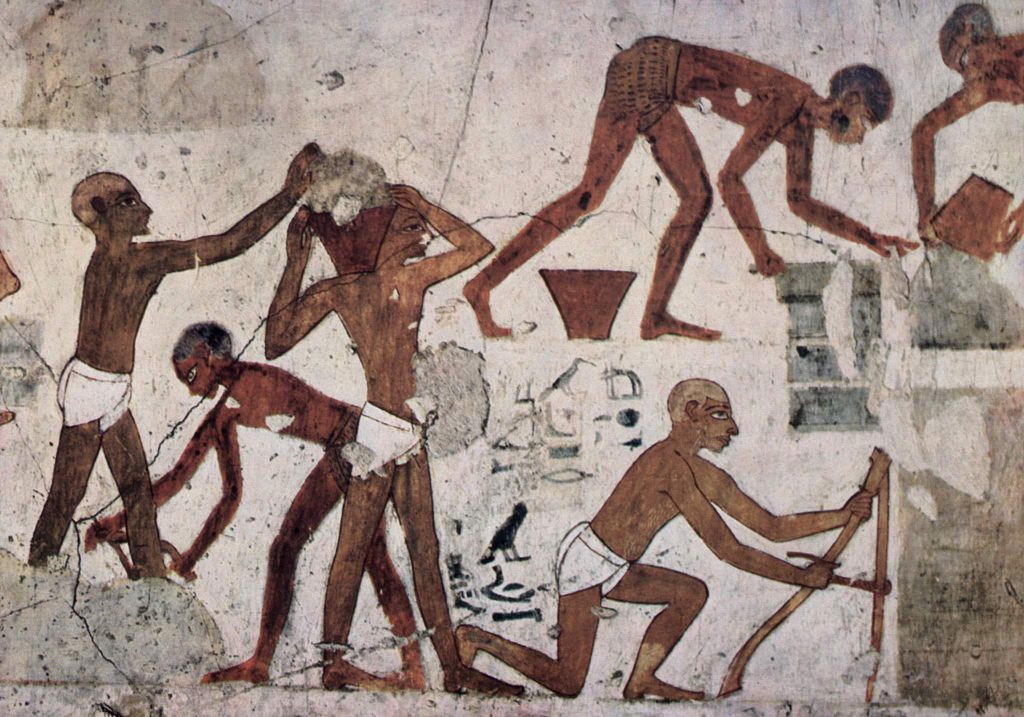
Influence of Slavery on Ancient Egyptian Society
In examining the complex web of relationships that comprised Ancient Egyptian society, one cannot overlook the significant influence that the slavery system exerted on various facets of daily life, economics, and social structure, as slaves not only performed menial tasks but also played crucial roles in monumental projects, thus embedding themselves within the very fabric of Egyptian civilization. The societal hierarchy of Ancient Egypt, which was rigidly stratified into various classes, saw slaves occupying a unique yet pivotal position, as they were often regarded as property, yet their labor was indispensable to nobility and the prosperous classes who depended heavily on slave-driven economies for agricultural output and construction initiatives that defined the empire's legacy. Furthermore, the presence of slaves in households, whether as domestic workers or agricultural laborers, significantly impacted family structures and contributed to the development of wealth among the elite, as they were able to acquire more slaves, thereby enhancing their status and influence while reinforcing the existing social order.
| Social Class | Role of Slaves |
|---|---|
| Nobility | Utilized slaves for luxury and maintenance |
| Middle Class | Maintained farms and small businesses |
| Lower Class | Worked alongside slaves in agriculture |
The economic implications of the slavery system cannot be overstated, as it provided substantial labor for agriculture, which was the backbone of the Egyptian economy, yielding a surplus that not only sustained the population but also allowed for trade with neighboring civilizations to thrive. In addition, the reliance on slave labor in the production of goods, especially in large construction projects such as temples and pyramids, became a testament to the technological prowess and organizational capabilities of Ancient Egypt, as vast numbers of slaves were mobilized for these endeavors, thereby fostering a culture that celebrated monumental achievements as representations of divine favor and human ingenuity. Ultimately, the influence of slavery on Ancient Egyptian society was profound, shaping social hierarchies, labor dynamics, and cultural expressions in ways that are felt even in the legacies of modern civilization. 1. Economic Dependency: Wealthy landowners relied on slave labor for agricultural production, ensuring their prosperity and social status. 2. Monumental Construction: Slaves were integral to the construction of iconic structures, contributing to a culture of achievement and divine favor. 3. Social Stratification: The existence of slaves reinforced existing class structures, as the elite amassed wealth and influence through ownership of slaves. 4. Cultural Contributions: Slaves influenced aspects of culture, such as crafts and domestic arts, reflecting their diverse skills and enrichments to society. 5. Reinforcement of Power: The dependency on slaves served to enhance the power dynamics between classes, creating a society that was heavily reliant on the subjugation of others for advancement.
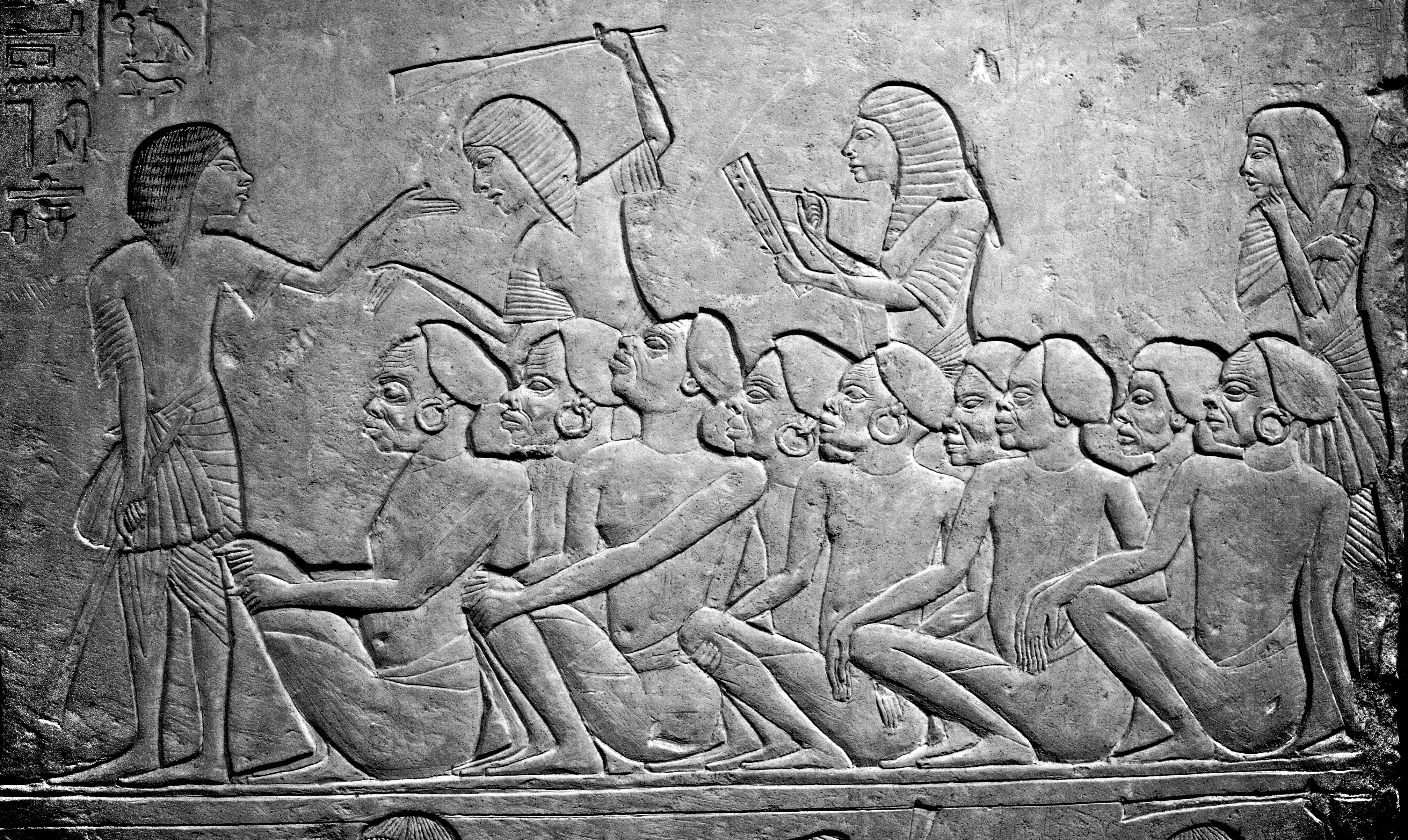
Types of Slaves in Ancient Egypt
The slavery system in Ancient Egypt was characterized by a variety of slave types, each fulfilling distinct roles and responsibilities, which significantly contributed to the socio-economic dynamics of the civilization, and was not a monolithic entity but rather a complex structure woven into the fabric of daily life. In ancient Egyptian society, slaves could be classified into several categories: domestic slaves, agricultural workers, skilled artisans, and those captured in war, and this diversity in the slave population not only reflects the multifaceted nature of slavery but also its integral role in shaping the economy and culture of the time. As a notable example, the historian Herodotus recorded that domestic slaves often lived in better conditions than some free laborers, suggesting that the type of labor and the nature of one's servitude could heavily influence the treatment received. Moreover, domestic slaves, who worked within homes, typically engaged in tasks such as cooking, cleaning, and child-rearing, providing essential services for the households they were a part of, and were often regarded with a certain level of respect, which sometimes blurred the lines between free citizens and slaves. On the other hand, agricultural workers were primarily responsible for laboring on farms and estates, playing a critical role in sustenance and food production, thereby supporting the entire community, while it’s worth noting that these slaves often faced harsher conditions due to the physically demanding nature of agricultural tasks. Skilled artisans, distinguished from other slaves, were valued for their expertise in areas such as pottery, carpentry, and metalwork, contributing significantly to both the economy and the artistic legacy of Ancient Egypt, and were often allowed more autonomy compared to their counterparts in labor-intensive roles. In Ancient Egypt, the types of slaves included:
- Domestic Slaves
- Agricultural Workers
- Skilled Artisans
- War Captives
- Debt Slaves
Additionally, war captives represented another vital category of slaves, often forcibly brought into servitude following military conquests, and this influx of new slaves could lead to significant demographic changes within the society, highlighting the intersection of warfare and the slavery system. Interestingly, there were also debt slaves, individuals who, due to financial liabilities, opted to sell themselves into slavery for a specified period until debt repayment, demonstrating that not all forms of slavery were the result of war or conquest. The existence of these varied types of slaves within the Ancient Egyptian slavery system illustrates not only the social complexity of the time but also emphasizes the reliance on these individuals to maintain and advance various sectors of Egyptian life, providing us with a nuanced understanding of their contributions, circumstances, and living conditions.
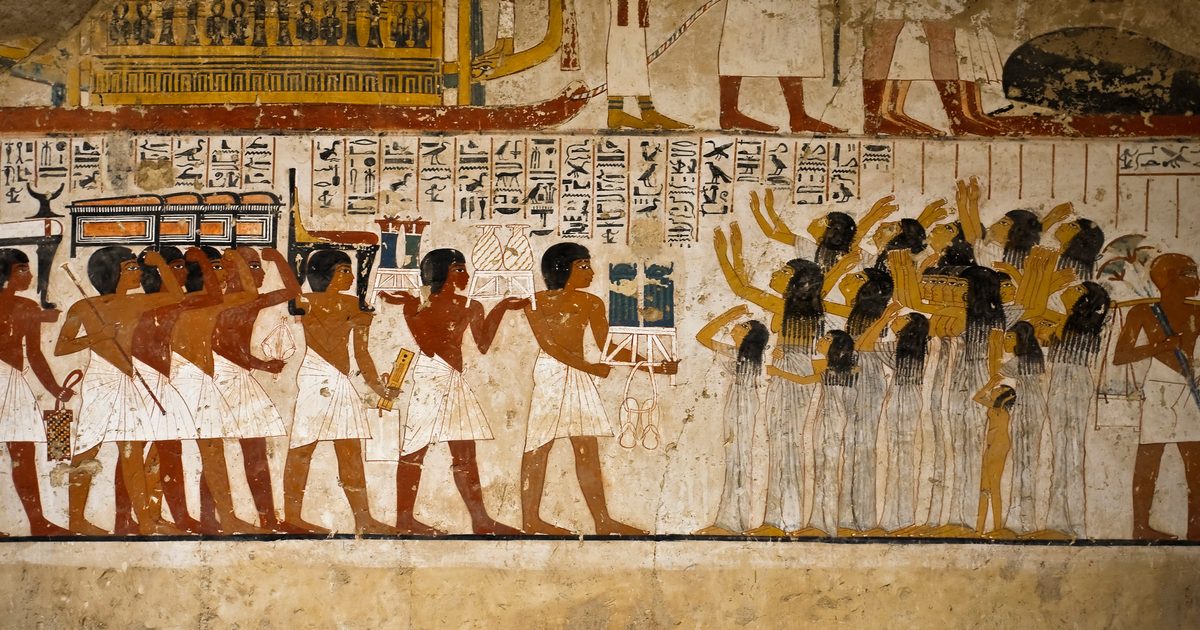
Economic Impact of Slavery in Ancient Egypt
The slavery system in Ancient Egypt played a pivotal role in shaping the economic landscape of one of the most fascinating civilizations in history, as the labor provided by slaves was integral to various sectors, including agriculture, construction, and domestic service, thus creating a complex interplay between economic growth and the social hierarchy that governed life in Ancient Egypt. Wealthy landowners and high-ranking officials often relied heavily on enslaved individuals not only to cultivate and harvest crops, particularly the staple of the Egyptian economy, grain, but also to undertake large-scale building projects that employed thousands, revealing the dual importance of slave labor in sustaining both agrarian and monumental initiatives. As such, the economic reliance on slavery created a structured dependency that affected social dynamics and wealth distribution, shedding light on the underlying motivations that sustained this practice throughout the ages.
Contributions to Agriculture and Tax Revenue
As an agrarian society, the economy of Ancient Egypt revolved largely around its agricultural output, and the use of slaves in farming allowed for increased production and efficiency, which ultimately led to higher tax revenues for the state, enhancing the economic power of the pharaohs and their administrative bureaucracies. The labor provided by enslaved individuals ensured that the vast tracts of fertile land along the Nile were cultivated to produce not only grain for local consumption but also surplus for trade, thus solidifying Egypt's status as a vital agricultural hub in the ancient world. Consequently, the synergy between slave labor and agricultural productivity formed the backbone of the Egyptian economy, enabling the maintenance of a complex societal structure that depended on permanent financial and resource accumulation.
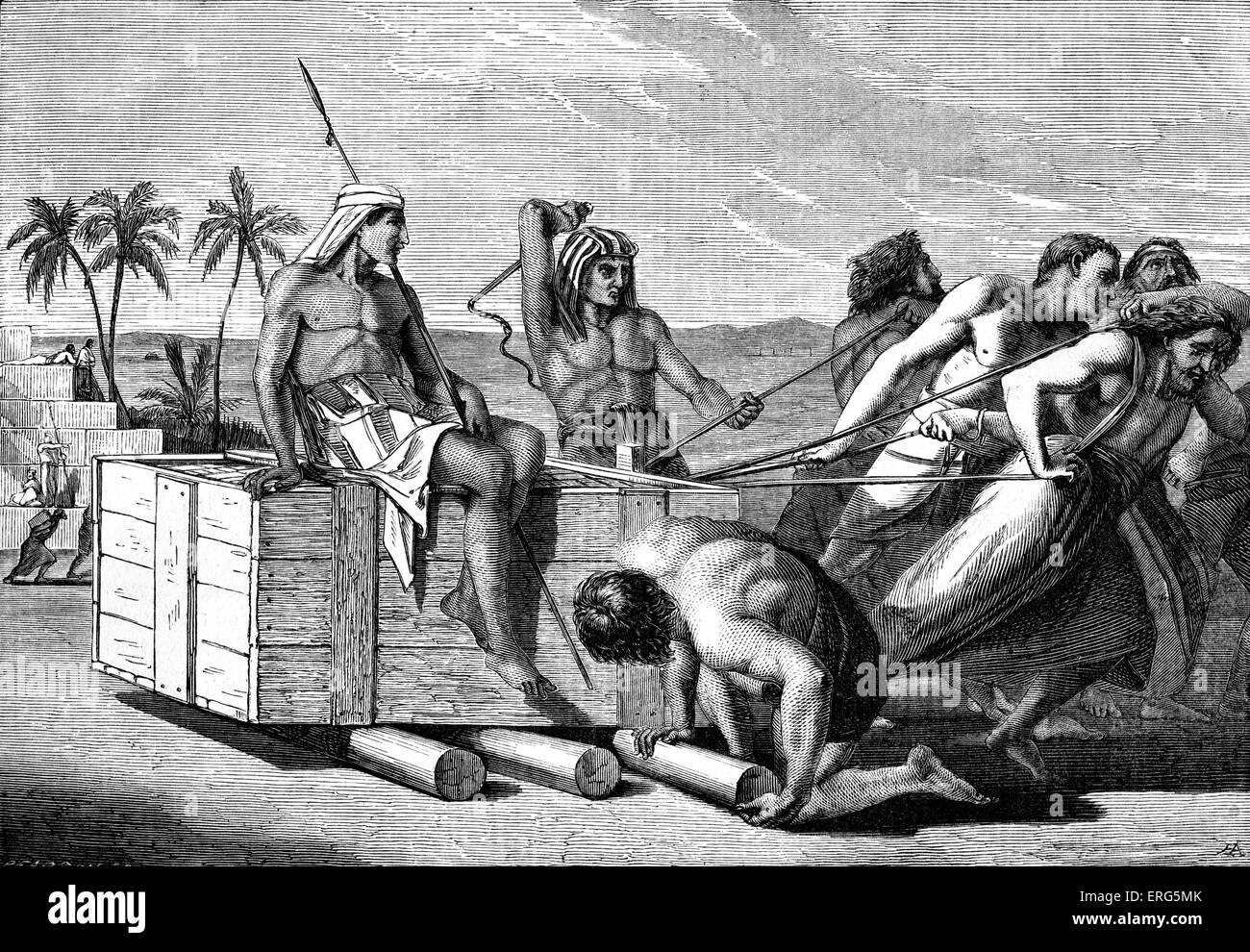
Promotion of Large Construction Projects
Another significant economic impact of the slavery system in Ancient Egypt was its contribution to a plethora of monumental construction projects, including the grand pyramids, temples, and cities, which not only served to demonstrate the power and religious devotion of the pharaohs but also stimulated economic activity by creating jobs for skilled laborers who managed and oversaw the work performed by slaves. The construction processes relied heavily on the availability of a large pool of enslaved individuals, which facilitated the ambitious architectural endeavors that have captured the imagination of the world and remain as enduring symbols of Egyptian civilization. Furthermore, these projects were often financed through the wealth generated by agricultural surplus, indicating a reciprocal relationship between the slavery system and the developments that characterized Ancient Egyptian society.
- Increased agricultural output due to slave labor.
- Higher tax revenues benefiting the state and rulers.
- Direct involvement in monumental construction projects.
- Support for a hierarchical economic structure.
- Creation of skilled labor opportunities around slave-driven initiatives.
Slave Labor in Ancient Egyptian Construction Projects
The monumental architectural feats of Ancient Egypt, such as the majestic pyramids that continue to astound us even thousands of years later, were largely attributed to the extensive use of a dedicated labor force, which, contrary to popular belief, was not solely composed of slaves but also included skilled workers and seasonal laborers, although the slavery system in Ancient Egypt played a significant role in the construction of these iconic structures. Historical records suggest that a considerable number of these projects relied heavily on forced labor, with slaves being used to transport large stones, prepare building materials, and perform the back-breaking physical labor required to raise these incredible edifices to the heavens. Moreover, slavery in Ancient Egypt was not merely a means of acquiring a workforce but a reflection of the social hierarchies and economic conditions of the time, where the power dynamics between the elite and the oppressed were stark and unyielding. The workforce comprised various categories of laborers, including those who had been captured during wars, sons and daughters born into slavery, as well as individuals who may have sold themselves into servitude due to debt or economic hardship, which illustrates the complexity of the slavery system in Ancient Egypt, wherein slaves could possess varying degrees of roles and responsibilities in construction projects. It's noteworthy that some slaves were assigned to skilled labor positions, such as craftsmen or builders, depending on their capabilities, indicating that their contribution went beyond mere manual labor; they were integral to the artistic and architectural innovation that defined the era. This multilayered dynamic of slave labor also brought forth a unique relationship between the slaves and their overseers, often fostering a blend of animosity and necessity that marked their daily existence on these sprawling construction sites. 1. Slaves were used primarily for manual labor, including the transportation of stone blocks from quarries. 2. Some skilled slaves were involved in the actual building processes, contributing to intricate designs and engineering feats. 3. Seasonal laborers were often employed alongside slaves during peak construction phases, reflecting a communal effort that transcended social classes. 4. Conditions on construction sites varied greatly, impacted by the management practices of overseers and the importance of the project. 5. The pyramids and temples serve as lasting testaments to both the architectural brilliance and the labor system that enabled their creation. In conclusion, while the grand archaeological triumphs of Ancient Egypt symbolize the zenith of engineering and artistic achievement, they also stand as profound monuments to the complexities and the harsh realities of the slavery system that fueled not only their physical construction but also highlighted the societal structures that permitted such practices to flourish. The interplay between skilled laborers, seasonal workers, and slaves reflects a broader narrative about the ancient civilization's reliance on diverse worker contributions, and serves as an important reminder of how these systems of labor have shaped human history. Consequently, understanding the role of slave labor in these construction projects provides valuable insights into the socio-economic fabric that characterized Ancient Egyptian society, ultimately revealing the indelible mark left by the slavery system on the monuments that continue to capture our imagination today.
Slave Revolts and Resistance in Ancient Egypt
The history of Ancient Egypt is marked not only by its monumental architecture and rich cultural heritage but also by the struggles and resistance of those subjected to its slavery system, which was a crucial component of the economy and social fabric of the civilization. Throughout different dynasties, slaves were used in various capacities, and instances of revolts and resistance can be traced back to these times, reflecting the inherently oppressive nature of their circumstances as they sought freedom and autonomy. One notable quote that encapsulates the plight of slaves reads, “A people enslaved is a people inspired to fight back,” highlighting the enduring human spirit that prevailed even in the direst situations. In Ancient Egypt, the revolts were often a response to extreme mistreatment or unbearable working conditions, and although not extensively documented compared to other cultures, some records indicate that resistance took various forms, from outright revolts to more subtle acts of defiance. For example, similar to other ancient societies, slaves might have engaged in work slowdowns, sabotage, and even fleeing from their masters, with some attempts at rebellion documented in historical texts that provide insight into the resilience of enslaved individuals. Notably, the well-known revolt led by an individual named Amun this had ramifications that reached the highest echelons of power as it challenged the status quo and raised awareness about the injustices faced by the enslaved population. Some of the notable forms of resistance exhibited by slaves in Ancient Egypt include:
- Fleeing to safe havens, such as remote areas or neighboring territories where they hoped to avoid recapture.
- Organizing collective actions among fellow slaves to rise against their masters and demand better treatment.
- Engaging in religious rituals that emphasized freedom and divine justice, which instilled hope and solidarity.
Despite these acts of defiance, many revolts were suppressed, and the slaves faced harsh reprisals, often leading to severe punishments for those involved, and thus the systemic nature of the slavery system made it difficult for these actions to culminate in significant change, which underscores the importance of examining these moments in history, as they reveal much about the struggle for human rights and dignity.
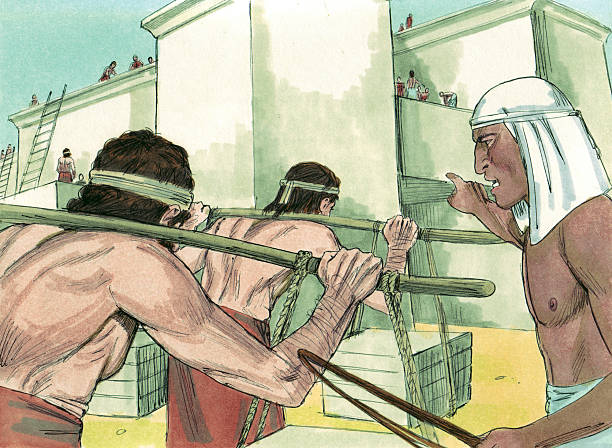
Legal Rights and Status of Slaves in Ancient Egypt
The legal rights and status of slaves in ancient Egypt were complex and somewhat nuanced, reflecting a society that, while heavily reliant on the slavery system, still retained certain measures of legal recognition towards these individuals, who were often considered property yet retained some rights that differentiated them from mere chattel. Slaves were not entirely devoid of legal recourse; for instance, they could, under certain circumstances, appear in court and pursue legal actions, highlighting a degree of recognition that afforded them a voice within the legal framework of ancient Egyptian society, albeit limited compared to free citizens. Furthermore, the presence of laws that explicitly defined the treatment of slaves and outlined the responsibilities of their owners indicated that, within the slavery system, there existed parameters designed to mitigate outright abuse and promote a semblance of oversight.
| Legal Rights | Description |
|---|---|
| Right to Legal Representation | Slaves could sometimes appear in court to defend themselves or claim justice. |
| Protection Against Cruel Treatment | Laws existed that prohibited owners from severely mistreating their slaves. |
| Ability to Buy Freedom | Some slaves had the opportunity to accumulate wealth to purchase their own freedom. |
In a society where the economy was fundamentally intertwined with labor, the status of slaves was often treated with a degree of pragmatic consideration that ensured the continuity of the labor force, which was essential for everything from agriculture to monumental construction projects. Although slaves could be classified as property, their presence in the households of their masters could also elevate their status somewhat; domestic slaves, for instance, were often treated relatively well and sometimes enjoyed privileges that agricultural or field slaves did not, reflecting the inherent social stratification even among those within the confines of the slavery system. Additionally, it is worth noting that while slaves had some recognized legal rights, these were often contingent upon their owners’ willingness to uphold such allowances, and in practice, the reality could vary widely from one slave to another, shaped by the inherent conditions of their servitude, the nature of their labor, and the disposition of their owners, thus creating a tapestry of experiences uniquely indicative of the ancient Egyptian influence. It is crucial to understand that the legal status of a slave in ancient Egypt could fluctuate based on the economic, social, and political climate, as various factors, including changes in dynasties or major social upheavals, could effectively alter the formal recognition of their rights within the broader framework of the slavery system. Ultimately, while slaves in ancient Egypt enjoyed certain legal rights that provided them some protection and agency, it is essential to contextualize these rights within the overarching power dynamics of the era, which reinforced the inherent inequalities and limitations placed upon them, ensuring that despite any semblance of rights they may have had, their status remained curbed by the prevailing norms of ownership and servitude entrenched within the society. The complexities surrounding the legal treatment of slaves serve as a poignant reminder of the lengths to which societies could go to normalize and institutionalize hierarchical structures, placing individuals at vastly different rungs on the social ladder, often predicated solely on the circumstances of their birth or the whims of chance.
Abolition of Slavery in Ancient Egypt
The abolition of slavery in Ancient Egypt is a subject that often prompts extensive debate among historians, as there is significant evidence suggesting that slavery as a formal institution underwent profound transformations throughout the various epochs of Ancient Egyptian civilization, transitioning from a more embedded social structure to a more fluid concept of servitude. During the later periods, particularly during the Third Intermediate Period and the subsequent periods of foreign rule, the social fabric began to shift in complex ways, leading to alterations in how slaves were viewed and treated, reflecting not only economic needs but changes in cultural and religious attitudes toward human dignity and individual rights. Consequently, the gradual erosion of the traditional slavery system in Ancient Egypt encouraged a movement toward the establishment of a society where freedom and autonomy became increasingly valued, albeit in a context that was often still fraught with inequality and social stratification.
- One significant factor contributing to the decline of the slavery system involved the changing economic conditions, especially as the agricultural economy began to rely more heavily on paid laborers instead of slaves.
- Additionally, the influence of foreign cultures, particularly during periods of occupation and rule by non-Egyptian dynasties, introduced new philosophies that encouraged the reassessment of slavery and personal freedom.
- Religious ideologies also played a crucial role, as the increasing emphasis on moral and ethical considerations led many to reflect on the inherent value of human life and the morality of owning another person.
As the Exodus narrative from the Hebrew Bible indicates, the concept of liberation became intertwined with the social consciousness of the time, and while the specifics of the abolition under historical rulers are less documented, the resonances of these transformative ideas cannot be overlooked. Over time, certain dynasties began implementing policies that recognized the humanity of those once considered as chattel, which marked a pivotal move towards the diminished use of forced labor in favor of alternative forms of employment. In this nuanced historical landscape, the shift from viewing individuals solely through the lens of ownership to recognizing their rights encompassed a cultural revolution that spanned generations, leaving a legacy that would echo through the annals of history.
| Period | Key Changes in Slavery | Factors Influencing Change |
|---|---|---|
| Old Kingdom | Formalized slavery system | Growing agricultural economy |
| Middle Kingdom | Shift towards less rigid roles | Cultural exchanges with neighboring regions |
| New Kingdom | Emergence of paid labor | Religious and ethical reassessments |
The eventual decline and abolition of the slavery system in Ancient Egypt illustrate a complex interplay of economic, social, and moral factors that shifted over time, reflecting broader changes in human society and our understanding of freedom and autonomy. While the complete eradication of slavery did not occur overnight, the movements toward incorporating free labor models and recognizing the humanity of the enslaved laid the groundwork for future social transformations, demonstrating that even the most entrenched systems of servitude can evolve under the pressures of changing ideologies and interactions between cultures. These patterns of change not only shaped the societal structure of Ancient Egypt but also contributed to the ongoing discourse regarding human rights, dignity, and the quest for freedom throughout subsequent civilizations.

Frequently Asked Questions
What was the primary source of slavery in ancient Egypt?
The primary source of slavery in ancient Egypt included prisoners of war, those in debt, and individuals born into slavery.
How were slaves treated in ancient Egypt?
Slaves in ancient Egypt could be treated harshly but often had some rights; they could own property, marry, and could even earn their freedom.
What types of work did slaves perform in ancient Egypt?
Slaves performed various tasks, including agricultural work, construction, and domestic duties, often working alongside paid laborers.
Did ancient Egyptian society allow for the possibility of freedom for slaves?
Yes, ancient Egyptian society sometimes allowed for the emancipation of slaves, either through purchasing their freedom or being granted freedom by their masters.
Were all slaves in ancient Egypt considered of the same status?
No, there were different categories of slaves in ancient Egypt; some held more prestigious roles such as skilled artisans, while others did menial tasks.
What role did slavery play in the economy of ancient Egypt?
Slavery played a significant role in the economy of ancient Egypt, helping to support various sectors including agriculture, construction, and trade.
How did ancient Egyptians justify the existence of slavery?
Ancient Egyptians often justified slavery through cultural and religious beliefs, viewing it as a natural order of society where individuals could be enslaved for various reasons.

